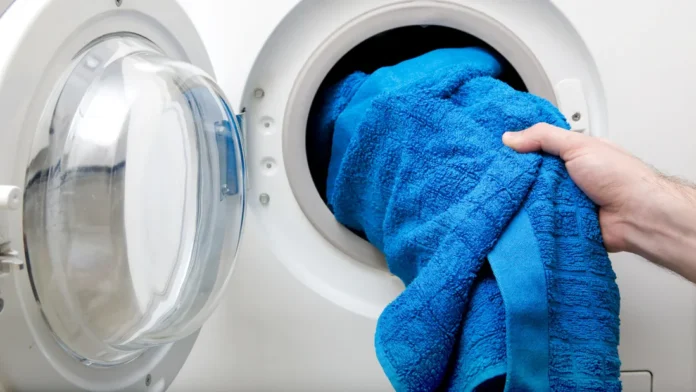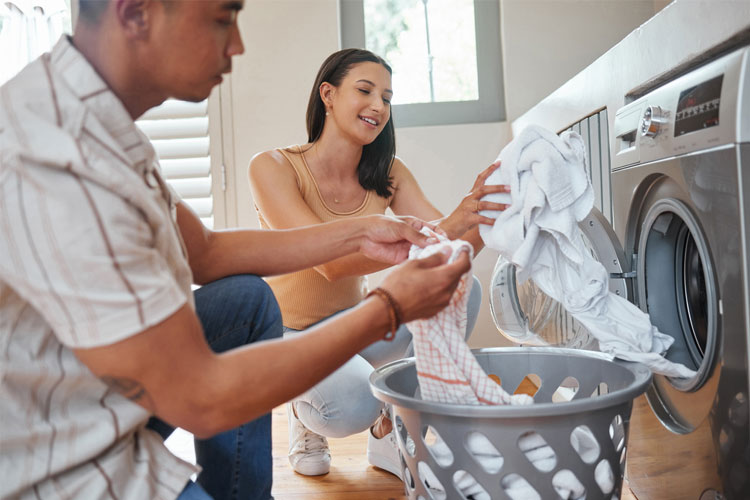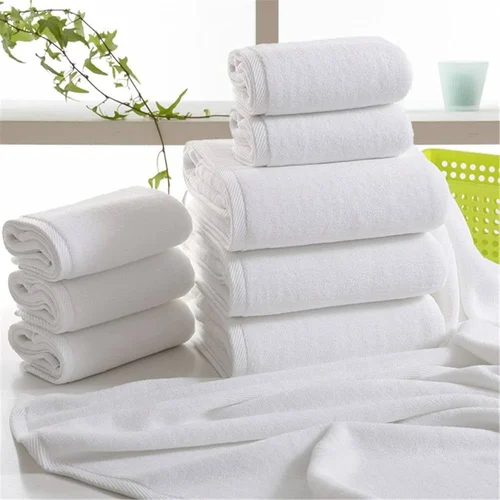Let’s be honest—after a long week, it’s tempting to toss your towels and clothes into the same wash just to get it over with. It feels efficient, right? One load, less water, less time. But here’s the thing: that innocent habit might be ruining your laundry without you even realizing it.
Mixing towels with clothes might look like a shortcut, but it’s actually a one-way ticket to faded fabrics, stiff towels, and worn-out threads. Let’s talk about why this habit is hurting your laundry—and how to fix it.

Towels and Clothes Have Different Cleaning Needs
Towels are heavy-duty. They absorb water, body oils, dead skin, and sometimes even pet hair. That’s why they need hot water, longer cycles, and strong agitation to get really clean. Clothes, especially things like t-shirts, underwear, and delicate fabrics, don’t need all that muscle. In fact, they get damaged by it.
When you wash them together, you either:
- Don’t clean the towels enough, or
- Overwash the clothes and ruin them.
It’s like trying to clean a frying pan and a wine glass with the same steel brush. One needs scrubbing, the other needs gentle care.
Video: 5 Things I Would Never Do as a Laundry Expert | Consumer Report
Lint Is the Sneaky Saboteur
If you’ve ever found fuzz all over your dark clothes after doing laundry, that’s towel lint. Towels shed tiny fibers—especially newer ones—and these fibers stick to everything. Your favorite black leggings? Now dusted with white fuzz. That sleek workout shirt? Looks like it rolled through a pile of fluff.
Lint isn’t just annoying—it clogs your dryer vent, gets stuck in seams, and makes both towels and clothes look older than they are. Want to keep your wardrobe looking fresh? Keep lint-prone towels far away from your other laundry.
Fabric-on-Fabric Damage Is Real
Towels are rough. Their thick loops rub aggressively against softer fabrics during the wash. Zippers, snaps, and hooks on clothing can catch on towel loops, causing pulls and snags. And the reverse is just as bad—soft shirts can get pilled or stretched from the constant rubbing.
Think of it like sandpaper and silk. They just don’t belong in the same space. If you want your clothes to stay smooth and your towels to stay fluffy, they need separate cycles.
Towels Aren’t As Clean As They Look

Let’s talk about what’s really hiding in your towels. They absorb everything—sweat, skin flakes, soap residue, and bacteria. And most people don’t wash them as often as they should. That makes them the perfect environment for microbial growth, especially when they’re damp for hours after use.
Now imagine tossing that into a load with your everyday clothes. Those germs can transfer to your shirts, socks, and even underwear. It’s not just about fabric care anymore—it’s about hygiene. If you want to keep your family healthy, especially kids or elderly relatives, keep towels in their own wash.
Drying Towels and Clothes Together Causes Chaos
Towels are bulky and thick. Clothes are light and thin. When you dry them together, you end up with a hot mess. Clothes finish drying way before towels do, which means:
- Your shirts might shrink or feel stiff
- Your towels come out still damp
- Your dryer works harder and longer
This not only wastes energy—it shortens the lifespan of your clothes and towels. Separate drying isn’t just about performance—it saves you money and keeps everything in better shape.
Longevity Matters: Laundry Habits That Pay Off
Video: Washing towels tip
Here’s the bottom line: when you keep towels and clothes apart, you extend the life of both. You protect colors from fading, fabrics from stretching, and towels from turning into sandpaper. That’s money saved on replacements—and better results every time you open the closet.
Small changes add up. Over a year, separating loads can:
- Make your towels last up to 30% longer
- Keep clothes looking new
- Reduce energy use by avoiding over-drying
- Minimize lint buildup in your dryer
Simple Laundry Tips That Actually Work
Want laundry that smells better, feels better, and lasts longer? Follow this quick guide:
Sort your laundry by type and color. Towels go in their own load, preferably with other whites or light linens. Clothes should be grouped by color and fabric type.
Use the right settings. Choose “Heavy Duty” or “Cotton” cycles with hot water for towels. For clothes, use warm or cold water on a gentler cycle. Delicates need a cold, short wash.
Choose the right detergent. For towels, use an enzyme-rich detergent and occasionally add white vinegar to restore softness. For clothes, go with detergent that suits the fabric and skin type—skip the strong stuff unless it’s really needed.
Dry smart. Use high heat for towels, and medium to low for clothes. Avoid using fabric softeners on towels; they coat the fibers and reduce absorbency.
Clean your machine monthly. Run a hot wash with vinegar to flush out residue and keep everything fresh.
A Real-Life Wake-Up Call

My neighbor, Lisa, told me she always washed towels and clothes together. Then she noticed her towels getting scratchy and her favorite jeans fading fast. After switching to separate loads, her towels came out fluffier, her jeans held their color longer, and her laundry just smelled better.
Her story isn’t unusual. This simple switch has helped a lot of people preserve their wardrobes and cut back on laundry headaches.
So, Is It Really Worth the Extra Load?
Absolutely. Taking five extra minutes to sort your laundry pays off big time in the long run. Your towels will stay softer, your clothes will look newer, and you’ll save money, energy, and time.
The next time you’re about to dump everything into one basket, stop and think. Separate your loads—and your laundry (and your wallet) will thank you


